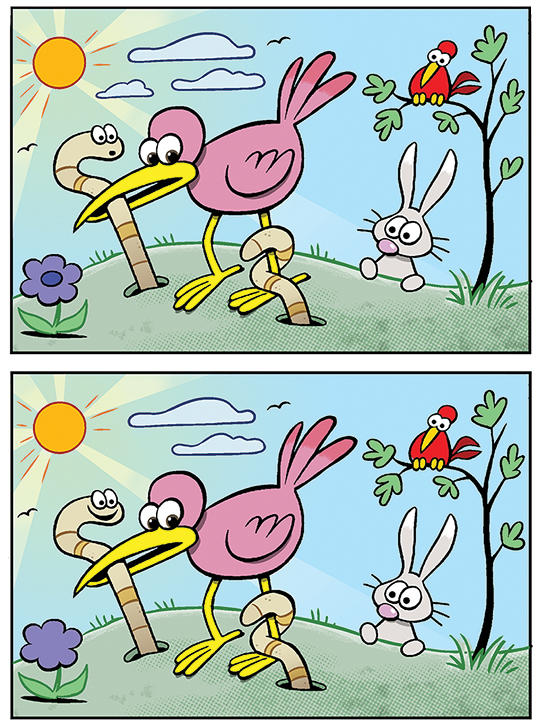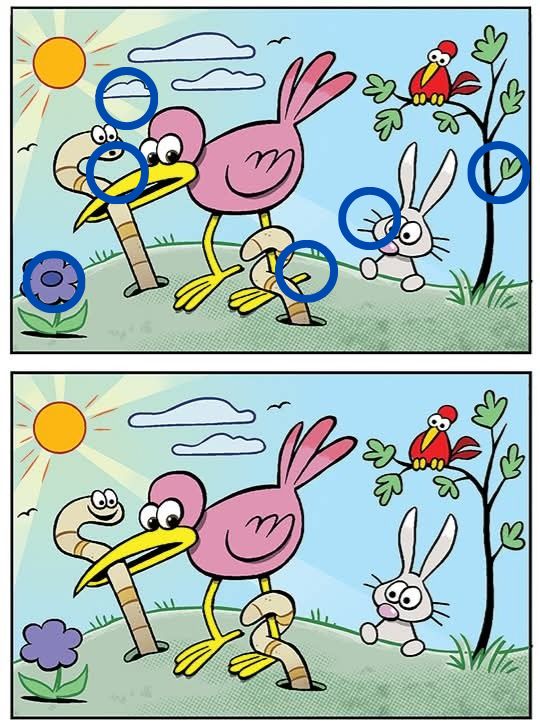Have you ever spotted a rosy-hued bird pecking at wriggling earthworms while a curious bunny watches from the sidelines? This idyllic scene—complete with a bright sun, drifting clouds, and a chirping companion overhead—captures a critical interaction in our ecosystems: birds feeding on worms. In this article, we’ll explore why earthworms matter, how birds hunt them, and ways you can create a backyard haven for both soil health and wildlife enjoyment.
The Unsung Heroes: How Earthworms Enrich the Soil
Earthworms are nature’s master gardeners. By burrowing deep into the ground, they:
- Aerate Soil: Their tunnels allow air and water to penetrate, helping plant roots breathe.
- Recycle Nutrients: As they consume decaying leaves and organic matter, earthworms release nutrient-rich castings that boost fertility.
- Improve Drainage: Their channels prevent waterlogging by creating pathways for excess moisture to escape.
Imagine your garden as a bustling kitchen—earthworms are the sous-chefs, prepping ingredients for your plants’ feast. Without them, soil becomes compacted and nutrients get locked away, making it hard for anything green to thrive.

Feathered Foragers: Why Birds Love Worms
For many songbirds, worms are a protein-packed treat, especially during breeding season when chicks need extra nourishment. Here’s how our pink-feathered friend in the scene zeroes in on its meal:
- Tactile Hunting: Birds like robins press their beaks into the soil, feeling for the slight vibrations of an earthworm inching by.
- Visual Detection: Contrasting worm bodies against dark soil can catch a bird’s eye—even a slight color shift gives them away.
- Seasonal Timing: After rains or early morning dews, worms surface to avoid flooded burrows, making them easy targets at dawn.
It’s a delicate dance: the bird’s quick reflexes versus the worm’s frantic wriggles. Watch closely and you’ll see that sideways flick of the head just before the worm disappears into a delighted beak.
Creating a Worm-Friendly Yard: Tips for Home Gardeners
Want more birds (and better soil) in your backyard? Invite earthworms first! Try these simple strategies:
- Add Organic Mulch: Leaf litter, straw, or shredded bark mimic natural forest floors and supply worms with decaying matter to feast on.
- Avoid Harsh Chemicals: Pesticides and synthetic fertilizers can harm worm populations. Opt for organic amendments like compost or fish emulsion instead.
- Maintain Moisture: Worms thrive in damp but not soggy soil. Water gardens deeply and infrequently to encourage deep burrowing.
- Plant Cover Crops: Species like clover or buckwheat protect soil from erosion and provide additional organic material when tilled back in.
By fostering a thriving worm community, you’ll not only see greener grass and bigger blooms, but you’ll also roll out the red carpet for your local birds.

Welcoming Winged Guests: Bird-Friendly Backyard Features
Once your soil teems with worms, it’s time to attract their aerial predators. Consider these backyard upgrades:
- Native Shrubs and Trees: Provide perches, shelter, and berry-rich snacks for a variety of bird species.
- Shallow Water Sources: A birdbath or shallow fountain gives foraging birds a place to drink and bathe, keeping their feathers in peak worm-hunting condition.
- Minimal Disturbance Zones: A quiet corner of your yard with leaf piles or brush heaps offers refuge for both worms and ground-feeding birds.
- Feeding Stations: Supplement natural foraging with suet or mealworms—perfect when weather drives earthworms deeper underground.
With these features in place, you’ll soon hear cheerful bird calls at sunrise and watch that pink feathery friend strut across your lawn in search of a wriggly breakfast.

The Bunny and the Byproduct: Unexpected Garden Helpers
Notice our cartoon rabbit lurking at the edge of the scene? While bunnies aren’t after worms, they too contribute to a healthy garden. Their droppings—rich in nitrogen and phosphorus—act as a natural fertilizer for grass and veggies. Just keep an eye on young seedlings, as rabbits can nibble tender shoots. A simple low fence or strategic planting (think herbs rabbits dislike, like mint and lavender) can keep both pests and soil enhancers in harmony.
Beyond the Backyard: Ecosystem-Wide Benefits
This tiny interaction between bird and worm scales up to global significance. In natural forests, prairies, and wetlands:
- Carbon Sequestration: Healthy soils lock away carbon, helping mitigate climate change.
- Biodiversity Support: Worms and birds form the base of complex food webs—predators like foxes, snakes, and raptors rely on abundant bird populations.
- Water Quality Improvement: Aerated soils allow rainwater to filter naturally, reducing runoff and pollution in rivers.
By nurturing these small-scale interactions in our own yards, we contribute to the resilience of entire ecosystems.

Conclusion
The next time you spy a pink bird delicately plucking an earthworm from the ground—while a patient rabbit and a chirping parrot spectate—remember you’ve witnessed a vital ecological exchange. Earthworms revitalize the soil, birds control invertebrate populations and fuel breeding success, and bunnies add nutrient-rich castings of their own. By embracing organic gardening, installing bird-friendly features, and respecting the intricate dance of predator and prey, you can transform your backyard into a thriving microcosm of nature’s harmony. So grab your gardening gloves, set up that birdbath, and prepare for morning adventures in worm preservation—because in nature, every wriggle and flutter matters.





